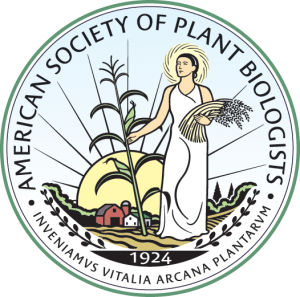Testimonials for Pioneer Member Enid MacRobbie
Mary Jane Beilby – I worked with Enid as Research Associate in 1980 – 1986 on “Mechanism of Transport in Charophyte Cells”. Computers were comparatively new and my husband Bruce was very interested. He worked with me to organise data logging and computer controlled voltage clamp (controlling the cell membrane potential difference, pd, through feedback mechanism). This technique allowed us to program complex clamp commands, such as bipolar staircase. I could sweep through membrane pds in the range of -400 to +100 mV and measure the resulting currents: Current – Voltage (I/V) analysis. To obtain maximal pd range, we also had to disable excitation transients, using lanthanum chloride. Most ion transporters display characteristic pd-dependence. Thus I could distinguish the proton pump and the high conductance potassium channel signature I/Vs and probe their response to external influences, such as range of various media, blockers and inhibitors. I also worked on chloride transport, starving the cells of chloride and then observing enhanced import. None of this would have happened without Enid’s support and advice. Early in our stay we saw demonstration of computer system MINC by DEC (Digital Equipment Corporation). Enid understood the great potential and obtained funding for it. The rest is history! Enid was also very supportive, when I became pregnant. Our daughter Kiri was born in February 1984. Bruce and I struggled through sleepless nights with little Kiri and later with organising childcare. My time in Cambridge turned out to be a defining period of my research career. Collaborating with Enid and other colleagues we published 11 papers in that period. I also connected with Enid on more personal level. It was (and still is) difficult to be a woman scientist and I could follow her shining example.
Andrew Smith (Frank Andrew Smith) – Enid MacRobbie was my PhD supervisor, and I was her first PhD student. My own subsequent career in plant biology started with leads and encouragement given by Enid and I owe her a great debt.
University of Cambridge – Enid MacRobbie is a pioneer of plant biophysics. Enid left an impressive legacy in the field of plant membrane biology and ion transport. Through her pioneering use of radiotracers to measure ion fluxes she identified active and passive transport processes in giant algae and later investigated potassium fluxes in stomatal movement in moncots and dicots. In addition to her scientific breakthroughs, Enid has a legacy of outstanding researchers who have had major impact on the field of plant ion transport and signalling, particularly for stomatal function.
MacRobbie is one of those pioneering physicists that transitioned to the study of biological systems in the mid 20th century. Following graduating with a B.Sc. in Physics at the University of Edinburgh in 1953, she stayed at the same university to be the first graduate student in Jack Dainty’s new biophysics research group. It was during her Ph.D. she made the first use of radioisotopes to measure ion fluxes in algae. After a postdoctoral position with Professor H. H. Ussing at the Institute of Biological Isotope Research in Copenhagen she took up a Research Fellowship at Girton College in Cambridge to work with George Briggs, Professor of Botany at the Botany School, where she stayed for over 40 years. In 1987, she was once again a pioneer, being the first woman scientist in Cambridge to be awarded a Personal Chair. In 1996, Enid became the first female Head of the Department of Plant Sciences, again pioneering. Her international status was recognised by election in 1991 as a Fellow of the Royal Society of London followed by being elected a Foreign Member of the National Academy of Sciences in 1999.
Those of us who had the pleasure of working with Enid, either in her research group, as departmental colleagues, or in the same research field, all came to know a fiercely intelligent scientist who was always keen to support the career of young scientists. This is made apparent by her huge success in mentorship. Her lab membership reads like a Who’s Who of plant electrophysiology and ion transport. Her early lab included F. Andrew Smith, who was her first Ph.D. student, soon joined by John Raven, John Cram and later included many notable names from the field including, Roger Spanswick, Mel Tyree, Richard Williamson, Dale Sanders, Roger Leigh, Carol Shennan, Mike Blatt, Mark Tester, Mary Beilby, Fouad Lemtiri-Chlieh and Gerhardt Thiel.
Enid’s pioneering and selfless approach to publishing research was impressive for her time, and now is breathtaking in an era of H-index and other metrics. Enid encouraged her group members to publish their research but rarely included herself as a co-author. Only a quarter of the research papers published from her group featured Enid MacRobbie as an author, undoubtedly contributing to the career success of her lab members.
Enid remains a pioneer in plant biology: Developing an entire new research area; being a formidable mentor; encouraging female undergraduate and postgraduate students to follow careers in academic research.
